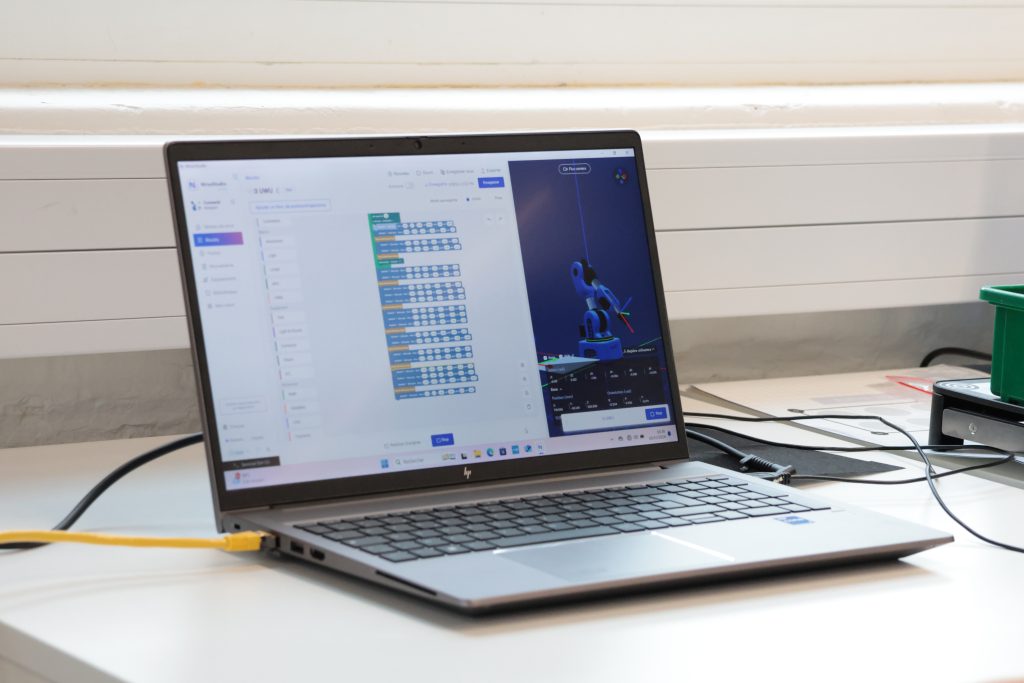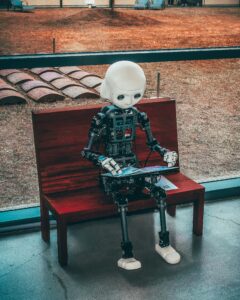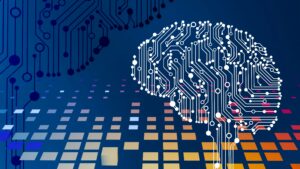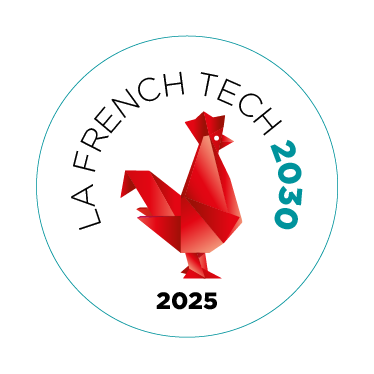Previously, robots operated in a predefined manner, acting strictly on explicit instructions provided by programming. This article explores the opportunities that artificial intelligence offers to equip these machines with learning, adaptation, and decision-making capabilities.
On one hand, robotics produces tools capable of performing complex tasks with extreme precision and speed, such as the 6-axis robotic arm used in production industries. On the other hand, AI continues to advance in simulating human intelligence. The burgeoning integration of these two technologies offers promising prospects for humanity.
Robotics and artificial intelligence: an overview
Solutions offered by robotics
Robotics is the science that deals with the study and design of robots and automatic machines. Through robotics, we have various instruments with highly elevated performance, like the 6-axis robotic arm used in production industries.
Robots possess capabilities that are almost unattainable for humans. For instance, they do not experience fatigue and are not prone to lapses in attention. This is why they are designed to execute repetitive, complex, or dangerous tasks.
Some robots improve productivity, competitiveness, and safety in several sectors: healthcare, defense, space research, the automotive industry… Others make daily life easier by taking over household chores.
In a constantly evolving world, robotics emerges as an indispensable technology. Even the youngest are introduced to this discipline through educational robotics.
Solutions offered by artificial intelligence
Artificial Intelligence (AI) aims to create computer programs capable of simulating human intelligence to solve highly complex problems. It exploits algorithms and statistical models to analyze information, detect patterns and make predictions.
AI is used to enable a system devoid of any form of life to act as if it were endowed with cognitive abilities. The result is machines capable of learning, analyzing, making decisions and adapting to new situations.
Here are two examples of how AI is being used:
– Search engines: Google deploys AI in the form of bots that crawl millions of web pages to index them based on the search terms entered by users.
– Virtual customer service: AI is used to predict customer requests and respond to them without human intervention.
To further its goal of imitating an intelligent being, AI can draw on other technologies, such as voice recognition and human dialogue simulators.
Robot-IA combination: purposes
Robots without AI
Robotics without AI focuses on the development of so-called “non-intelligent” robots. This is the technology used in the design of industrial robots operating on the basis of predefined rules and algorithms.
A robot without AI lacks the ability to learn from its experiences or adapt to new environments. For example, consider a collaborative robot (cobot) programmed for packaging objects. If not programmed to detect anomalies, it packages everything without distinguishing between normal and defective products.
Robots with AI
Robotics, supported by artificial intelligence, produces robots with extended capabilities. An example is smart vacuum cleaners that can adapt to users’ habits and the elements present in their homes for efficient cleaning.
AI-equipped robots stand out for their autonomy and adaptability. They can process information and make predictions by learning from their experiences. Achieving such results requires the collaboration of machine learning, deep learning, and other AI algorithms like pattern matching.
Students can now train in the use of AI in robotics by learning robots capable of interpreting sign language or playing chess.
Advantages of Using AI in Robotics
The use of Artificial Intelligence in robotics makes it possible to create machines that beat humans physically, yet have similar or even superior cognitive capabilities.
In the industrial sector, AI-driven robots offer notable advantages:
– Improve workplace safety through their ability to identify hazards and work in risky areas without fear of illness or injury;
– Increase productivity, as they can handle multiple tasks without making mistakes;
– Reduce production costs by reducing the need for human intervention, as robots are able to take on manual work autonomously.
Robots equipped with artificial intelligence are particularly useful in sensitive sectors such as health and defense. Such is the case with the Da Vinci surgical robot, which performs an operation with a degree of precision difficult to achieve in traditional surgery. This quality can save lives in minimally invasive operations.
Robot-AI Combination: Perspectives
Even without being equipped with Artificial Intelligence, robots are becoming more and more powerful these days. What they lack is the autonomy to work with minimal human intervention. AI fills this gap and emerges as the missing piece to unleash a robot’s full potential.
Here are just a few of the branches of Artificial Intelligence that can bring big changes to robotics:
– Machine Learning, which enables robots to continuously improve their task performance through data-driven learning;
– Vision AI, which mimics part of the human brain to enable a robot to visualize, detect and work on objects that its system has never seen before;
– Conversational AI, which uses a variety of data (voice, text, etc.) to take a robot’s humanoid-like interaction capabilities to the next level.
In essence, the use of Artificial Intelligence in robotics covers a wide field of applications. The manufacturing industry is just one of the sectors to benefit, thanks to reduced costs, increased productivity and improved safety. We can already conclude that AI opens up new possibilities for the use of robots in our world.
















